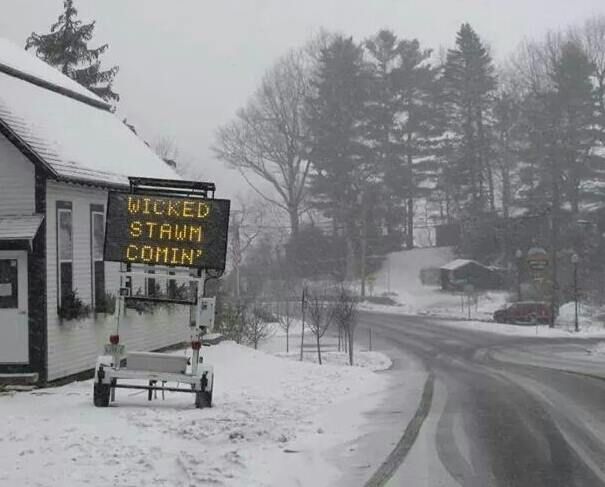A winter storm, like any other major weather event, can keep you trapped for days without power. How do you prepare for a snowstorm? Know what to do before, during, and after a blizzard with these preparedness tips.
Know Your Winter Storm Warning Levels
Get acquainted with these winter storm watch terms and definitions from the National Weather Service. Becoming familiar with these terms will help you act quickly and prep accordingly just before a snowy weather event.
- Winter Storm Watch
There is a potential for hazardous winter weather within 36 to 48 hours. Keep tracking weather news, review your storm plan, and get preparations in place. - Winter Weather Advisory
Current winter conditions are expected to cause significant inconveniences but are not severe enough to issue a warning. - Winter Storm Warning
Hazardous and potentially life-threatening winter weather is currently happening or will happen within 24 hours. The National Weather Service will issue a warning when a combination of snow, ice, and wind damage conditions are met.

Prepare Before a Snowstorm
Try to prepare your home for winter before the first snowfall. The key to keeping your family safe and comfortable during a blizzard is to have a storm plan in place well before you have to use it.
- If you live in a very snowy place, it may be a good idea to invest in a generator. In the event of a winter power outage, a reliable generator and a good fuel supply can make a huge difference.
- Create a winter home emergency kit. You can use the supply list by the American Red Cross as a guide.
- Inspect and/or clean your chimney before winter.
- Get a battery-operated weather radio.
- Stock up on batteries.
- Get your hands on a good shovel.
- Clean the gutters and ensure that the roof is in good condition.
- Weatherstrip windows and doors.
- Insulate the walls and attics.
- Stock up on blankets.
- Stock up supplies in your first-aid kit.
- Learn first-aid for hypothermia and frostbite.
- Make sure your fire extinguishers work.
- Purchase sand, ice melt, or kitty litter for icy surfaces.
- Winterize your car. More information is on Fema.gov.

What to Do Just Before a Snowstorm
When the National Weather Service issues a Winter Storm Watch, it’s wise to start taking precautions for a bigger storm, just in case.
- Stock up on fuel for the generator.
- Charge your phones, electronics, rechargeable batteries, and power banks.
- Make sure flashlights are easily accessible.
- Fill your gas tank.
- Stock up on non-perishable foods and toilet paper.
- Bring your pets and plants inside.
- Make sure your fireplaces and stoves are clean and in working order.
- Insulate water pipes with newspapers or other insulation materials.
What to Do During a Snowstorm
During a winter storm warning, the temperature can drop to below 25 Fahrenheit and snow can reach 5 inches or more within 12 hours. In a worst-case scenario, ice and wind can damage electricity lines.
To-Do Checklist (With Electrical Power)
- Keep your thermostat as high as possible for as long as you have electricity.
- Stay inside. Limit travel to emergencies only.
- Keep pipes from freezing by turning on every water faucet to a slow drip.
- Wear dry or waterproof clothes.
- Stay hydrated with plenty of fluids.
To-Do Checklist (If the Power Goes Out)
- If you have one, use a generator and have it power important devices, like the refrigerator and thermostat.
- Unplug computers and other non-essential electrical equipment to avoid a power surge.
- Keep the freezer and refrigerator door closed to keep food from spoiling.
- For extended periods of no electricity, move perishables to garage to stay frozen.
- Use flashlights to avoid a risk of a fire.
- When cooking, be mindful of fumes and carbon monoxide poisoning.
- Have family members dress in layers, and use blankets and towels for extra warmth.
- Listen for weather updates on the weather radio..

What to Do After a Snowstorm
You’ve weathered the winter storm: now it’s time to clean up and get back to the day-to-day normal.
- Handle your generator safely to avoid electrocution, carbon monoxide poisoning, or fire.
- Continue to listen to the local news or the weather radio for updates and closures.
- Use sand, ice melt, or kitty litter to add traction to slippery surfaces.
- Avoid driving until conditions improve.
- Ensure your pets and family members have access to food and water.
- Shovel snow safely and stay aware of your health condition to avoid overexertion.
